If you’ve ever wondered, “Can my dog eat pineapple?” you’re not alone. Many pet owners seek to share their favorite fruits with their furry friends. Pineapple, a tropical fruit packed with nutrients, can be a fun and healthy treat for dogs when offered in moderation. Before adding it to your pup’s diet, let’s explore the benefits and potential risks of feeding your dog pineapple.
Benefits of Pineapple for Dogs
Pineapple is not only delicious but also offers several health benefits for dogs. Here are some of the key advantages:
- Rich in Vitamins: Pineapple is loaded with vitamins C and B6, which can help support your dog’s immune system and energy levels.
- Contains Bromelain: This enzyme helps with digestion and may reduce inflammation in your dog.
- High in Fiber: The fiber in pineapple can aid in digestion and promote a healthy gut.
- Low in Calories: Pineapple is a low-calorie treat, making it a great option for dogs that need to watch their weight.
- Hydration: With a high water content, pineapple can help keep your dog hydrated, especially during hot weather.
Potential Risks of Feeding Pineapple to Dogs
While pineapple can be beneficial, there are some risks involved when feeding it to your dog. It’s essential to be aware of these to ensure your pet stays healthy.
- High Sugar Content: Pineapple is sweet and contains natural sugars that can lead to weight gain or dental issues if consumed in excess.
- Digestive Upset: Some dogs may experience an upset stomach or diarrhea if they eat too much pineapple.
- Canned Pineapple Caution: If you’re considering canned pineapple, make sure it is in juice and not syrup. The syrup contains added sugars that aren’t good for dogs.
- Choking Hazard: Always cut pineapple into small, manageable pieces to avoid the risk of choking.
How to Safely Introduce Pineapple to Your Dog
If you decide to let your dog try pineapple, start slowly. Here’s how to do it safely:
- Choose Fresh Pineapple: Opt for fresh pineapple over canned. This ensures that your dog enjoys the maximum health benefits without any added sugars.
- Prepare It Properly: Peel and core the pineapple, removing the tough outer skin and the central core before cutting it into small, bite-sized pieces.
- Start with a Small Amount: Offer your dog a tiny piece first. Monitor their reaction to it for any signs of digestive upset.
- Limit Portion Sizes: Keep portions small. A few small chunks as a treat or mixed into their regular food is usually sufficient.
- Check with Your Vet: If you have any concerns or if your dog has pre-existing health issues, consult your veterinarian before introducing new foods.
When Not to Feed Your Dog Pineapple
There are certain situations when you should avoid giving pineapple to your dog. These include:
- If your dog has a history of pancreatitis or other digestive disorders.
- If your dog has allergies to fruits or specific foods.
- If your dog is on a special diet prescribed by your veterinarian that does not allow for sweet treats.
Ultimately, pineapple can be a fun and rewarding snack for your dog when given appropriately. Always be cautious and monitor your pup for any adverse reactions. For more information on dog nutrition and safe treats, consider visiting the AKC’s guide on healthy human foods for dogs or the Humane Society’s list of safe and toxic foods for dogs.
With proper guidance and care, you can enjoy sharing a piece of this tropical delight with your four-legged friend! Just remember, moderation is key, and your dog’s health should always be the priority.
Safe Fruits for Dogs: A Comprehensive Guide
As a dog owner, you likely want to treat your furry friend with healthy snacks. Fruits can be a delightful and nutritious addition to your dog’s diet, but it’s essential to know which ones are safe. Understanding which fruits are safe for dogs can help you keep your pup happy and healthy.
Many fruits are packed with vitamins and minerals that can benefit your dog. However, other fruits may be harmful or even toxic. Always consult your veterinarian before making significant changes to your pet’s diet.
Safe Fruits for Dogs
Here’s a list of fruits that you can safely offer your dog:
- Apples: Rich in vitamins A and C, apples provide fiber and can help clean your dog’s teeth. Just remember to remove the seeds and core.
- Blueberries: These tiny fruits are antioxidant powerhouses, and they offer numerous health benefits. Blueberries make an excellent training treat.
- Bananas: Moderation is key here. Bananas are full of potassium and vitamins, but due to their higher sugar content, only give them occasionally.
- Watermelon: This hydrating fruit is great for hot days. Remove the seeds and rind, and offer the fleshy part to your pup.
- Pineapple: A vitamin C-rich tropical delight, pineapple can be a refreshing treat. It’s best served fresh and in small amounts.
- Strawberries: Packed with fiber and vitamin C, strawberries can also help whiten your dog’s teeth. Serve them in moderation due to their sugar content.
- Mango: This tropical fruit is filled with nutrients. Remove the pit and skin before serving it to your dog.
- Pear: Pears are a great source of vitamins, but be sure to remove seeds and core to avoid potential choking hazards.
Fruits to Avoid
While many fruits are safe, there are several that you should avoid giving to your dog:
- Grapes: These can cause kidney failure in dogs. Even a small amount can be harmful.
- Raisins: Just like grapes, raisins are dangerous and can lead to severe health issues.
- Avocado: Contains a substance called persin, which can be toxic to dogs in large quantities.
- Cherries: The fruit is safe in small amounts, but the pit contains cyanide, which is toxic. Always remove the pit.
Serving Fruits to Your Dog
When introducing any new fruit, start with small portions to watch for any adverse reactions. Here are some tips for serving fruits safely:
- Wash all fruits thoroughly to remove any pesticides or chemicals.
- Cut fruits into small, bite-sized pieces to prevent choking. This is especially important for larger fruits like apples and pears.
- Avoid canned fruits, as they often contain added sugars or preservatives.
- Frozen fruits can be a fun and refreshing snack during warm days. Just ensure they’re safe fruits.
Benefits of Feeding Fruits to Your Dog
Adding fruits to your dog’s diet can bring many benefits:
- Improved Digestion: Many fruits are high in fiber, aiding digestive health.
- Weight Management: Fruits can be a low-calorie treat compared to commercial dog treats.
- Hydration: Fruits like watermelon have high water content, which can help keep your dog hydrated.
- Improved Overall Health: The vitamins, minerals, and antioxidants found in fruits can boost your dog’s immune system and overall health.
Keep in mind that variety is key. Offering different fruits can help your dog get a wide range of nutrients. Always remember, moderation is essential. Too much fruit can lead to upset stomach or diarrhea.
For more information on safe fruits for dogs, visit AKC or check out resources like CDC Healthy Pets.
By following these guidelines, you can ensure that your dog enjoys tasty treats while staying healthy and safe. With the right fruits, you can be the best dog owner while promoting a happier life for your beloved pet.
Understanding Dog Dietary Needs: What to Avoid
Every dog owner wants to provide the best for their furry friend, and part of that care includes understanding what dietary needs your dog has. Just like humans, dogs have specific dietary requirements. Certain foods can be harmful or toxic to dogs, and knowing what to avoid is crucial for keeping them healthy.
When considering what to feed your dog, here are some common foods to steer clear of:
- Chocolate: This sweet treat is loved by many, but it contains theobromine, which can be toxic to dogs. Even small amounts can lead to serious health issues, so make sure to keep it out of your dog’s reach.
- Avocado: While healthy for humans, avocados contain a compound called persin that can be harmful to dogs. Feeding your dog even a small piece can lead to vomiting and diarrhea.
- Grapes and Raisins: These small fruits may seem harmless, but they can cause kidney failure in dogs. It’s best to avoid them altogether.
- Onions and Garlic: Both onions and garlic are part of the allium family and can be toxic to dogs. Even small amounts can lead to anemia, so it’s better to skip them.
- Macadamia Nuts: These nuts are particularly toxic and can cause weakness, depression, vomiting, and tremors in dogs.
- Caffeine: Drinks containing caffeine, like coffee or tea, can have similar effects on dogs as chocolate. Symptoms include restlessness, rapid breathing, and heart palpitations.
- Alcohol: Just like humans, dogs should avoid alcohol. Even small amounts can lead to intoxication, and it can be extremely dangerous for their systems.
- Xylitol: This sweetener, often found in sugar-free gum and candies, is highly toxic to dogs. It can cause a rapid insulin release, leading to liver failure.
While it’s essential to know what to avoid, it’s equally important to understand your dog’s specific dietary needs based on their age, size, and health. Dogs require a balanced diet accounting for proteins, fats, carbohydrates, vitamins, and minerals. Here are some food categories your dog needs:
| Food Group | Examples |
|---|---|
| Proteins | Chicken, beef, fish, eggs |
| Carbohydrates | Rice, oats, sweet potatoes |
| Fats | Healthy oils (like fish oil), chicken fat |
| Fruits & Vegetables | Carrots, green beans, apples (without seeds), blueberries |
When introducing new foods to your dog’s diet, do so gradually. A sudden change can upset your dog’s stomach. Always keep an eye on how your dog reacts to new foods, as allergies can develop without warning. If your dog shows signs of an allergic reaction, such as itching, swelling, or gastrointestinal distress, consult your veterinarian immediately.
In addition to solid food, make sure your dog has access to plenty of fresh, clean water. Hydration is vital for their overall health and aids in digestion. Also, avoid a diet that includes excessive table scraps or human food. While it might be tempting to share your meals, many human foods do not provide the nutrients dogs require and may lead to obesity or other health issues.
If you are ever unsure about what foods are safe for your pet, it’s best to consult with a veterinarian or a pet nutritionist. They can provide tailored advice based on your dog’s specific breed and health conditions.
Learning about your dog’s dietary needs can help you avoid the pitfalls of feeding your pet inappropriate foods. For more detailed information on what your dog can and cannot eat, check out resources such as AKC’s guide or ASPCA Animal Poison Control. Keeping your pet’s health in mind will lead to a happier and healthier life for both you and your dog!
Creative Ways to Serve Pineapple to Your Dog
Pineapple is not only a delicious tropical fruit for humans but can also be enjoyed by dogs in moderation. If you’re thinking about adding this fruity treat to your dog’s diet, there are plenty of creative ways to serve pineapple that can make the experience enjoyable for both you and your furry friend. Here are some ideas to consider.
1. Fresh Pineapple Chunks
One of the simplest ways to serve pineapple to your dog is in fresh, bite-sized chunks. Make sure to remove the skin and core before offering it to your pet. You can add these chunks to your dog’s regular food as a tasty addition that can provide extra vitamins and fiber. Just make sure to introduce it slowly to monitor their reaction.
2. Frozen Pineapple Treats
On hot days, frozen pineapple can be a refreshing treat. Simply cut fresh pineapple into small cubes, place them in an ice cube tray, and fill it with water or low-sodium broth. Freeze them overnight, and you’ll have delightful frozen treats that your dog will love. It’s a fun way for dogs to cool down while enjoying a healthy snack!
3. Pineapple Smoothie
You can create a delicious pineapple smoothie for your pup. Mix fresh pineapple, plain yogurt, and a little water in a blender. Pour the mixture into a bowl and serve. This creamy treat is not only tasty but also beneficial for your dog’s digestive health due to the probiotics in yogurt.
4. Pineapple in Dog Treats
If you enjoy baking for your dog, consider adding pineapple to homemade dog treats. Here’s a simple recipe:
- 1 cup of whole wheat flour
- ½ cup of mashed banana
- ½ cup of crushed pineapple (drained)
- 1 egg
- ¼ cup of peanut butter (ensure it’s xylitol-free)
Mix all ingredients well, shape into small balls, and bake at 350°F (175°C) for about 20 minutes. Make sure they cool completely before serving!
5. Pineapple and Coconut Balls
Pineapple pairs wonderfully with coconut, making it a great base for dog snack balls. Combine equal parts of crushed pineapple and shredded coconut. Roll them into small balls and allow to set in the refrigerator for a couple of hours. It’s an easy treat that can provide a fun chew for your dog.
6. Pineapple and Pumpkin Puree
Blend equal parts of cooked pumpkin and crushed pineapple for a nutritious puree. This can be served as a topping over your dog’s kibble. Pumpkin is great for your dog’s digestion, and the pineapple adds a flavorful twist. Use it as an occasional meal enhancer to keep your dog’s diet varied.
7. Pineapple Infused Water
Make hydration fun by infusing your dog’s water with pineapple flavor. Place chunks of pineapple in their water bowl for a few hours. This infuses the water with a light, fruity taste that dogs may find appealing. Make sure to replace the pineapple regularly to avoid fermentation.
8. Pineapple Salsa
For a twist on a traditional salsa, you can create a dog-friendly pineapple salsa by mixing crushed pineapple with finely chopped cucumber and a pinch of parsley. This can be a fresh topping on meats for added flavor. Ensure the mixture is simple and avoid adding onion, garlic, or spicy ingredients, which are harmful to dogs.
When serving pineapple to your dog, always keep it in moderation. Some dogs may not react well to new foods, so it’s crucial to introduce pineapple gradually. Monitor your dog for any signs of digestive distress like vomiting or diarrhea following the introduction of pineapple. If your dog has underlying health issues or you’re unsure, consult with your veterinarian before adding new foods to their diet.
Pineapple is a nutrient-dense fruit that can be a healthy addition when served creatively to your dog. Enjoy the process of discovering which pineapple treats your dog loves the most!
For further information about dog diets and safe foods, visit The American Kennel Club or The ASPCA.
Health Benefits of Fruits for Dogs: A Nutritional Perspective
Including fruits in your dog’s diet can provide a range of health benefits. As natural sources of vitamins, minerals, and fiber, fruits can enhance your dog’s diet in various ways. Let’s explore some popular fruits that are good for dogs, along with their potential benefits.
Apples
Apples are rich in vitamins A and C as well as fiber. They can boost your dog’s immune system and improve their dental health by reducing plaque buildup. Just remember to remove the seeds and core before offering an apple slice to your canine companion.
Blueberries
These tiny fruits are packed with antioxidants that can help combat free radicals in your dog’s body. Blueberries are also low in calories, making them a great treat for dogs that need to watch their weight.
Watermelon
Watermelon is hydrating and low in calories, making it a refreshing snack. It contains vitamins A, B6, and C. Just be sure to remove the seeds and rind before sharing this juicy fruit with your pup.
Bananas
Bananas are a good source of potassium, which can help your dog maintain optimal muscle and nerve function. They are also great for providing energy during outdoor activities. Feed bananas to your dog in moderation due to their high sugar content.
Pineapple
Pineapple is safe for dogs and has numerous health benefits. It is rich in vitamins and minerals like vitamin C, manganese, and potassium. The enzyme bromelain in pineapple can aid digestion, making it easier for your dog to absorb nutrients.
Strawberries
Strawberries are not only tasty but also high in fiber and vitamin C. They can help whiten your dog’s teeth due to their natural acidity. Like bananas, strawberries are sugary, so they should be given in moderation.
Oranges
Oranges can be a refreshing snack for dogs. They provide vitamin C, fiber, and potassium. Most dogs enjoy the sweet taste, but remember to remove the seeds and skin. Too many oranges can upset your dog’s stomach, so moderation is key.
Potential Risks
While many fruits are safe for dogs, some can pose risks. Always consult your veterinarian about any new food you wish to incorporate into your dog’s diet. Some fruits to avoid include:
- Grapes
- Raisins
- Avocado
- Citrus fruits in large amounts
Feeding Guidelines
When introducing fruits to your dog’s diet, consider the following guidelines:
- Start with small amounts to see how your dog reacts.
- Choose fresh, ripe fruits without added sugars or preservatives.
- Cut fruits into bite-size pieces to prevent choking.
- Monitor your dog for any adverse reactions.
| Fruit | Health Benefits |
|---|---|
| Apple | Vitamin A & C, dental health |
| Blueberry | Antioxidants, low-calorie |
| Watermelon | Hydrating, vitamins A, B6, & C |
| Banana | Potassium, energy boost |
| Pineapple | Digestion aid, vitamins C & manganese |
| Strawberry | Fiber & vitamin C, teeth whitening |
| Orange | Vitamin C, fiber |
Incorporating fruits into your dog’s diet can contribute to their overall well-being. Just ensure you are providing safe options and monitoring for any reactions. If you’re looking for more information about healthy fruits for dogs, check out reputable sources such as American Kennel Club or ASPCA.
Remember, fruits should complement your dog’s balanced diet rather than replace it. Always make sure your furry friend is receiving the appropriate nutrients necessary for their health.
Conclusion
When considering whether your dog can safely enjoy pineapple, it’s crucial to weigh both the benefits and potential risks. Pineapple can offer numerous health advantages, including high vitamin C content and hydration, serving as a tasty treat that supports your pet’s immune system. However, moderation is key to prevent digestive discomfort from excessive sugar or fiber intake.
As you explore safe fruits for dogs, remember that not all fruits are created equal. Familiarize yourself with those that are dog-friendly and understand which ones to avoid—such as grapes and avocados—to ensure your furry friend remains healthy and happy. Each dog may have different dietary needs, so it’s wise to consult with your veterinarian before introducing new foods.
If you decide to give your dog pineapple, consider fun and creative ways to serve it. You can freeze small chunks for a refreshing summer snack, blend it into a smoothie, or combine it with their regular dog food for a burst of flavor. The aim is to make fruit a delightful part of their diet, while also being mindful of serving sizes.
Fruits like pineapple into your dog’s diet can enhance their nutrition and wellbeing. Fruits provide essential vitamins, minerals, and antioxidants that contribute to overall health. Just be sure to keep an eye on your pup’s reactions and adjust accordingly. With the right approach, pineapple can be a wonderful addition to your dog’s diet, turning snack time into a nutritious and enjoyable experience.




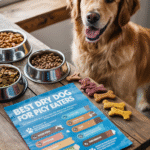
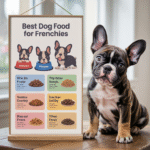

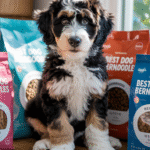
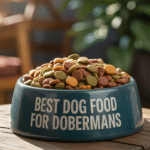


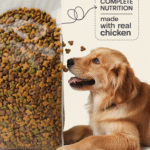
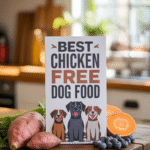

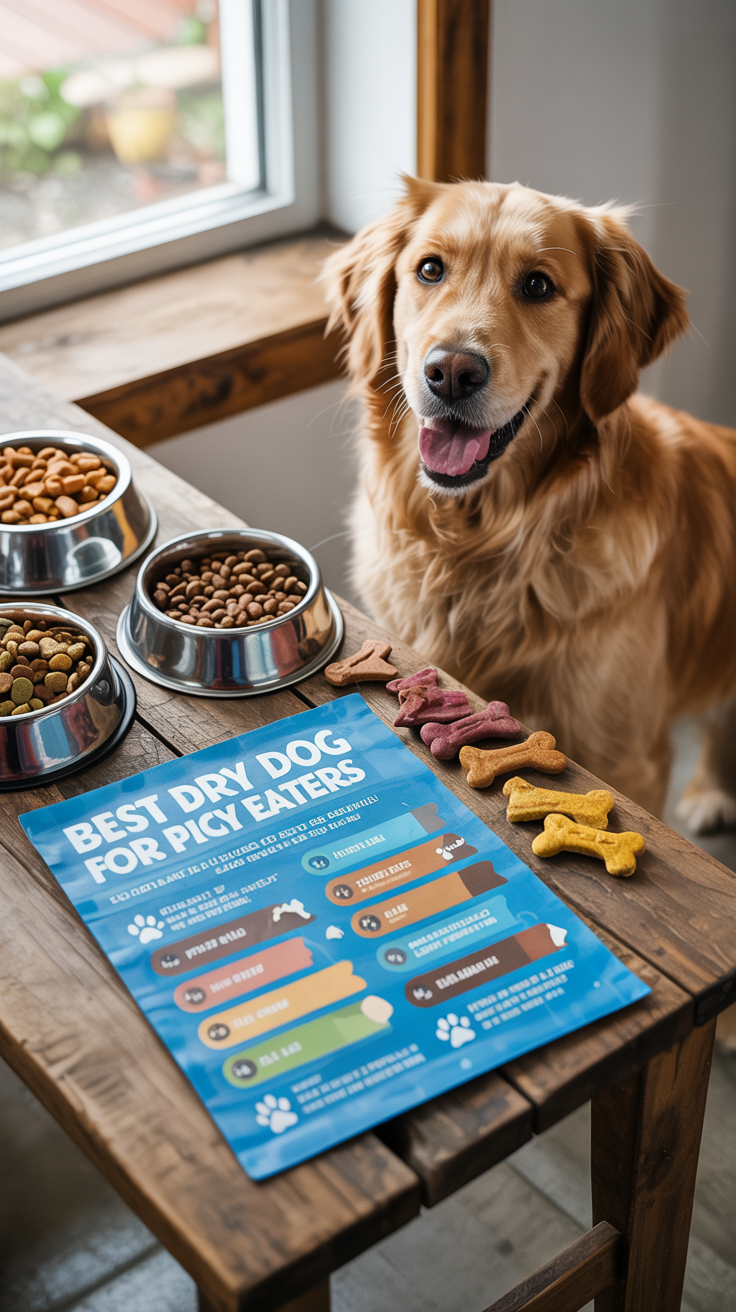
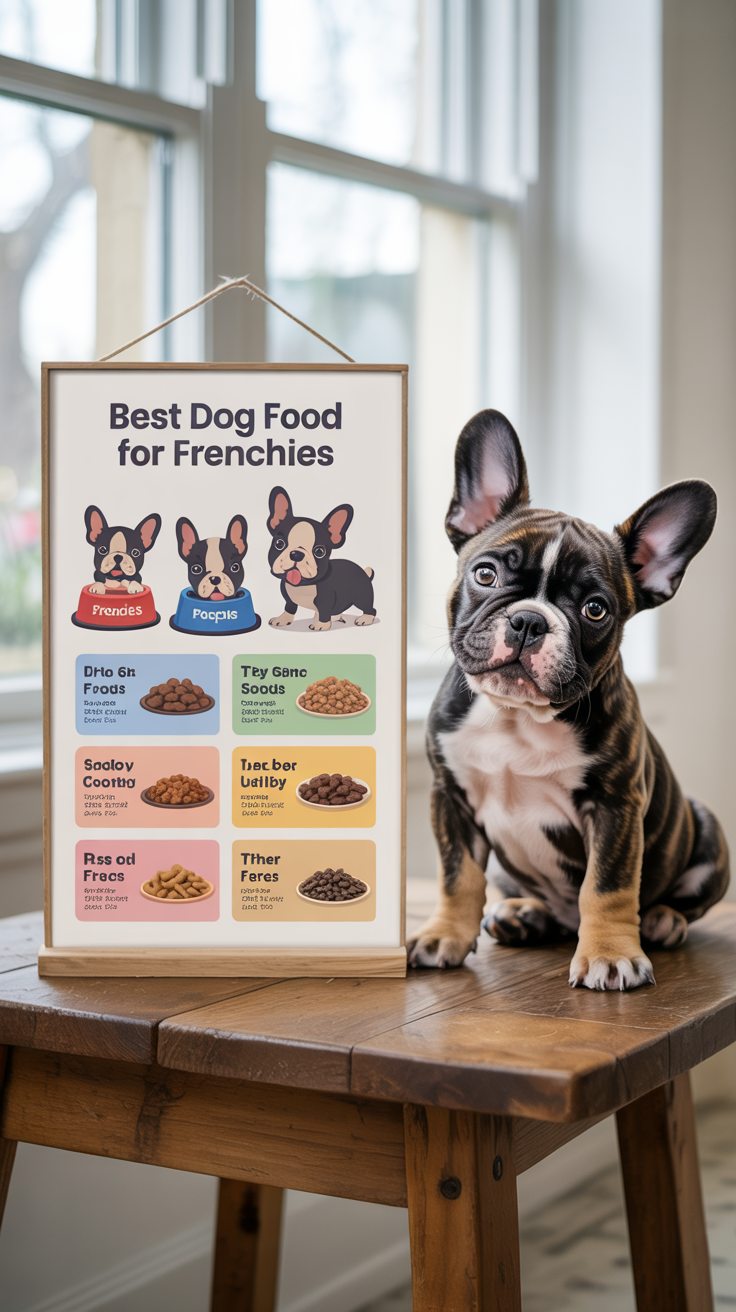
Leave a Reply